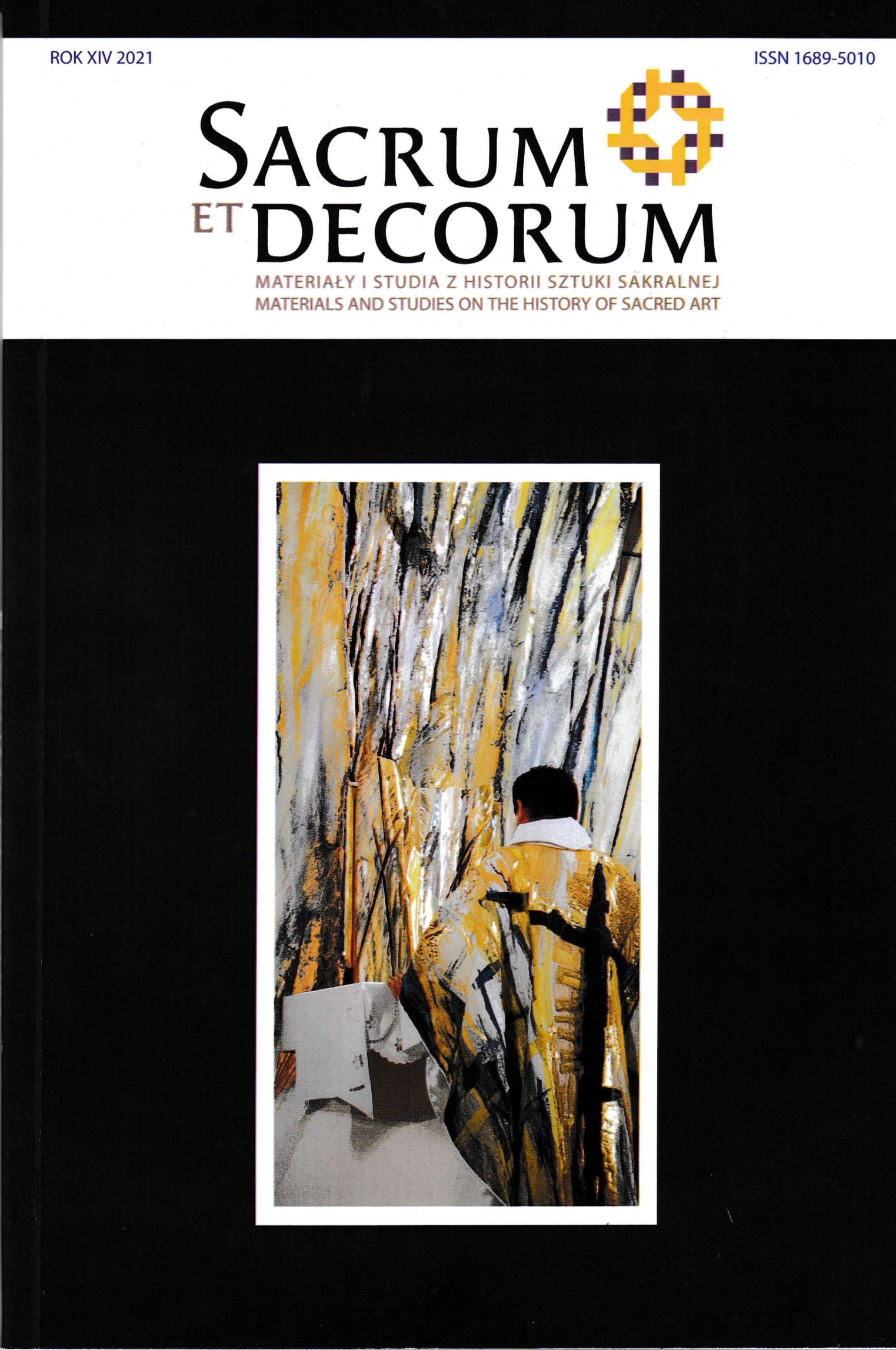Obiekty snycerskie o tematyce religijnej zrealizowane w kręgu Państwowego Liceum Sztuk Plastycznych im. Cypriana Kamila Norwida w Lublinie
DOI:
https://doi.org/10.15584/setde.2021.14.5Słowa kluczowe:
rzeźba religijna, Państwowe Liceum Sztuk Plastycznych w Lublinie, prace snycerskie, rzeźba w drewnieAbstrakt
W obecnym Zespole Szkół Plastycznych w Lublinie, od lat 90. XX wieku tylko na specjalizacji „snycerstwo” zrealizowano ponad 50 różnorodnych prac o tematyce religijnej – od ołtarzy po pojedyncze rzeźby. Część z tych obiektów trafiła do miejsc kultu lub instytucji religijnych, inne pozostają własnością szkoły bądź autorów. Ten obszerny zbiór powstał w wyniku wypracowanej w szkole dychotomicznej koncepcji kształcenia. Z jednej strony opiera się ona na studiowaniu (kopiowaniu, kompilowaniu) wzorów historycznych, z drugiej oferuje swobodę wizji plastycznej. W obu kierunkach adepci sztuki podążają pod opieką tych samych pedagogów, którzy wprowadzają je wymiennie, celowo różnicując zadania. Traktowane komplementarnie dają interesujące rezultaty w trakcie edukacji, jak i w samodzielnej twórczości absolwentów. Wybór prac przedstawionych w artykule nie pretenduje do wyczerpującego ujęcia zagadnienia obecności sacrum w pracach snycerskich powstałych w kręgu szkoły lubelskiej. Tym niemniej ich dobór w sposób sugestywny ilustruje rozwiązania plastyczne reprezentatywne dla każdego z obu nurtów kształcenia.Downloads
Bibliografia
Marek J., Boże Ciało – studium pracy własnej. Teoretyczna praca dyplomowa napisana w Międzynarodowej Katedrze Historii i Teorii Sztuki pod kierunkiem dr Anny Oleńskiej. Akademia Sztuk Pięknych w Warszawie, Wydział Rzeźby, Warszawa 2019.
Dąbek K., O snycerstwie w szkołach plastycznych, „Szkoła artystyczna. Seria wydawnicza Centrum Edukacji Artystycznej” 3 (7), 2019, s. 119–128.
Jank T., Ikona Krzyża z San Damiano, Kraków 2002.
Jurkowlaniec G., Chrystus Umęczony. Ikonografia w Polsce od XIII do XVI wieku, Warszawa 2001.
Labuda A., Wrocławski ołtarz św. Barbary i jego twórcy, Poznań 1984.
Mazurczak U., Zmysłowa cielesność zła i piękno cierpienia. Obrazy cielesności w sztuce, w: Sztuka i realizm. Księga pamiątkowa z okazji Jubileuszu urodzin i pracy naukowej na KUL Profesora Henryka Kieresia, red. T. Duma, A. Maryniarczyk, P. Sulenta, Lublin 2014.
Okoń J., Dramat liturgiczny, w: Encyklopedia Katolicka, t. IV, red. R. Łukaszyk, L. Bieńkowski, R. Gryglewicz, Lublin 1995, kol. 183–188.
Rogowski R. E., Compassio Dei: próba hipotezy cierpiącego Boga, „Wrocławski Przegląd Teologiczny” 3, 1995, nr 2, s. 63–76.
Rodziński S., Dylematy współczesnej sztuki sakralnej, „Nasza Przeszłość. Studia z dziejów Kościoła i kultury katolickiej w Polsce” 70, 1988, s. 253–271.
Selz J., Modern Sculpture: Origins and Evolution, Nowy Jork 1963.
Szubert M., Narodziny cierpienia zindywidualizowanego. W kręgu młodopolskiego doloryzmu, w: Literackie zmierzchy dziewiętnastowieczności, red. S. Brzozowska–Dybizbańska, A. Mazur, Opole 2013, s. 181–195.
Trościński G., Pieśń o Krzyżu i jej nieznany późnośredniowieczny przekaz. Z zagadnień polskojęzycznego zasobu literackich pozdrowień krzyża, „Pamiętnik literacki” 106, 2015, z. 1, s. 23–44.
Wiadomość o ołtarzu św. Jana Chrzciciela dziele Wita Stwosza w kościele ś. Floryjana na Kleparzu. Z 5 tablicami. W Cieszynie czcionkami Karola Prochaski, 1870.
Vallentin A., El Greco, tłum. H. Ostrowska-Grabska, Warszawa 1958.
https://bonifratrzy.pl/klasztor-drohobycz/2017/06/17/konsekracja-kosciola-pw-sw-antoniego-woloszczy/ https://kirchengemeindelexikon.de/einzelgemeinde/hildesheim-st-michaelis
Pobrania
Opublikowane
Jak cytować
Numer
Dział
Licencja
Prawa autorskie (c) 2021 Sacrum et Decorum

Utwór dostępny jest na licencji Creative Commons Uznanie autorstwa – Użycie niekomercyjne – Bez utworów zależnych 4.0 Międzynarodowe.
Zgodnie z polityką Open Access autorzy zachowują pełnię praw autorskich do swoich artykułów – bez ograniczeń.
Autorzy mogą deponować swoje artykuły w wybranym przez siebie repozytorium.


